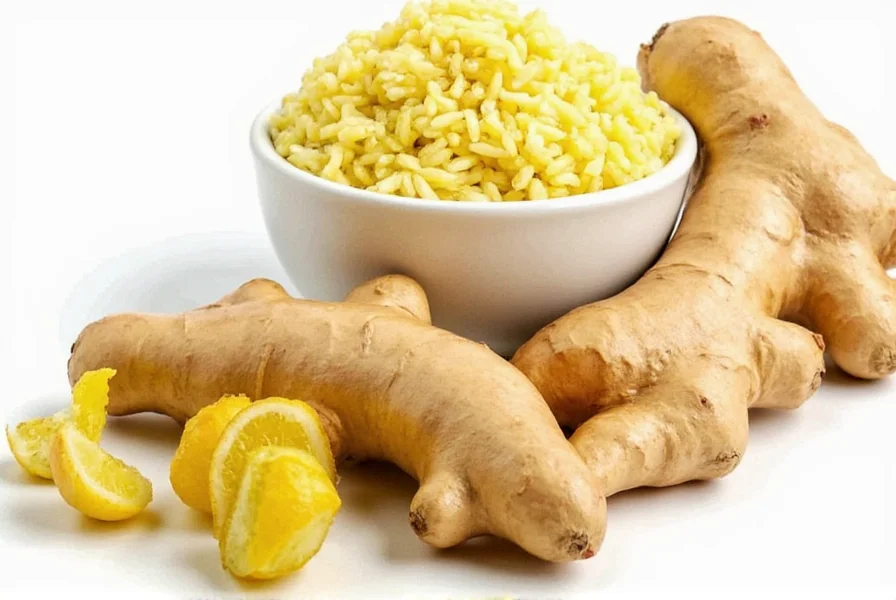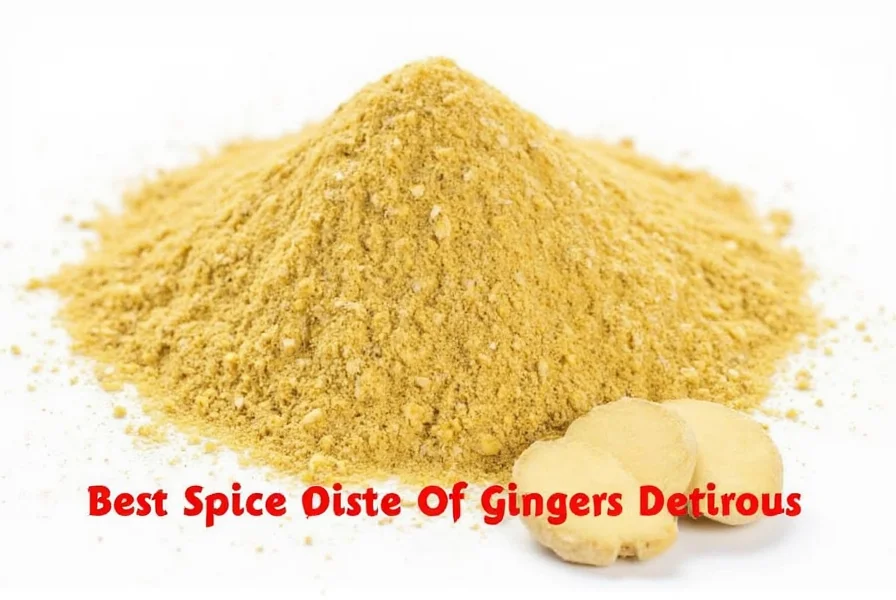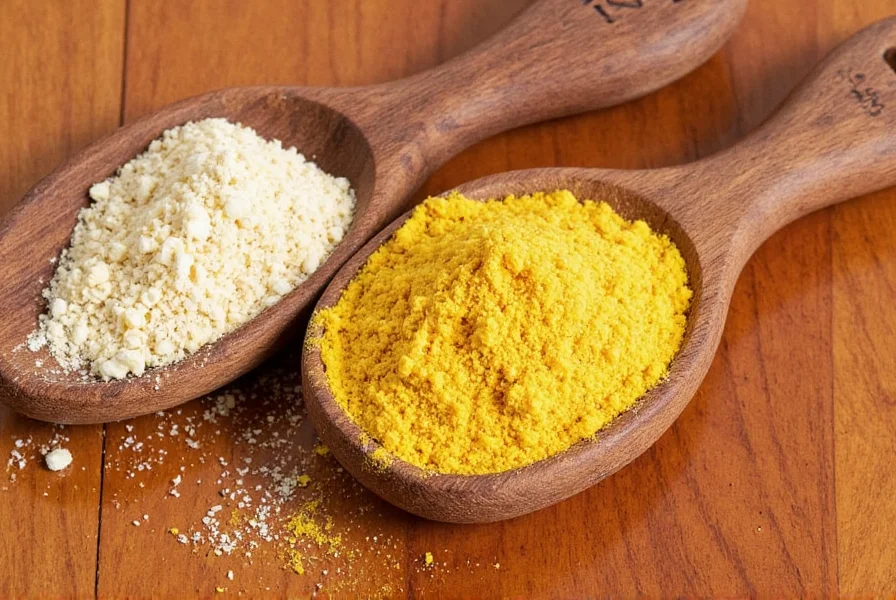If you've ever reached for ginger mid-recipe only to find your pantry empty, you're not alone. Finding the right replacement spice for ginger requires understanding both the flavor profile you're trying to replicate and the specific dish you're preparing. Whether you're dealing with dietary restrictions, unavailable ingredients, or simply experimenting with new flavors, knowing which spices can effectively stand in for ginger is essential kitchen knowledge.
Understanding Ginger's Unique Flavor Profile
Ginger brings a distinctive combination of warmth, spiciness, and citrusy notes to dishes. Its complex flavor contains:
- Peppery heat (from gingerols)
- Citrus undertones
- Sweetness when cooked
- Subtle floral notes
When seeking a ginger replacement in cooking, you'll need to determine which aspect of ginger's flavor is most important for your specific recipe. This decision will guide your choice of substitute.
Top Ginger Substitutes for Different Culinary Applications
Not all ginger alternatives work equally well across all recipes. The best substitute for ginger depends on whether you're working with fresh or ground ginger, and what type of dish you're preparing.
Fresh Ginger Replacements
| Substitute | Best For | Substitution Ratio | Flavor Notes |
|---|---|---|---|
| Galangal | Thai and Indonesian dishes | 1:1 | Sharper, more floral, less sweet than ginger |
| Turmeric | Curries and rice dishes | ½ tsp per 1 tbsp ginger | Earthy, less spicy, adds vibrant color |
| Ginger extract | Any recipe needing ginger flavor | ¼ tsp per 1 tbsp fresh ginger | Concentrated ginger flavor without texture |
| Ginger juice | Dressings and beverages | 1:1 | Pure ginger flavor without fibrous texture |
Ground Ginger Replacements
When your recipe calls for ground ginger, these alternatives work best in baking and spice blends:
- Allspice: Use in equal amounts for baking. Allspice combines notes of cinnamon, nutmeg, and cloves, making it excellent for gingerbread and spice cakes.
- Cinnamon-cardamom blend: Combine ½ tsp cinnamon with ½ tsp cardamom for each teaspoon of ground ginger. This works particularly well in sweet applications.
- Mace: Use ¼ tsp mace per ½ tsp ground ginger. Mace offers a more delicate, slightly citrusy alternative that works in both sweet and savory dishes.
- Nutmeg: Use sparingly (⅛ tsp per ½ tsp ginger) as it's much stronger. Best for creamy dishes and baked goods.
Best Ginger Substitutes by Cuisine Type
Understanding which ginger replacement works best for specific cuisines ensures your dishes maintain authentic flavor profiles.
Asian Cuisine Substitutions
For stir-fries, curries, and noodle dishes where fresh ginger is essential:
- Galangal remains the top choice for Thai and Indonesian recipes, though it has a sharper, more floral profile.
- Turmeric paste (½ tsp per 1 tbsp ginger) works well in Indian curries where color matters more than heat.
- Lemongrass (1 stalk minced per tbsp ginger) provides citrus notes in Southeast Asian dishes.
Baking and Dessert Substitutions
When ginger appears in cookies, cakes, and pies:
- Allspice is the most direct substitute at equal measurements.
- Cinnamon-nutmeg blend (¾ tsp cinnamon + ¼ tsp nutmeg per tsp ginger) creates a warm alternative.
- Cloves (⅛ tsp per ½ tsp ginger) can mimic ginger's warmth in small quantities.
Practical Tips for Using Ginger Substitutes
Successfully replacing ginger requires more than just swapping ingredients. Consider these professional tips:
- Adjust for moisture content: Fresh substitutes like galangal contain moisture similar to ginger, while dry spices require liquid adjustments in baking.
- Consider cooking time: Some substitutes (like turmeric) intensify with prolonged cooking, while others (like cardamom) mellow.
- Balance with acid: When using less citrusy substitutes, add a squeeze of lemon or lime to mimic ginger's bright notes.
- Start with less: Most ginger alternatives are stronger than ginger itself. Begin with ⅔ the recommended amount and adjust to taste.

When Ginger Substitutes Won't Work
Some recipes rely so heavily on ginger's unique properties that substitutes fall short. These include:
- Traditional ginger beer or ginger ale (requires actual ginger for proper fermentation)
- Certain medicinal preparations (ginger's specific compounds can't be replicated)
- Authentic Japanese or Korean dishes where ginger is a signature flavor
- Recipes specifically designed to highlight ginger's fibrous texture
In these cases, consider modifying your recipe rather than forcing a substitute. For example, a ginger-forward stir-fry might become a garlic-forward dish instead.
Creating Your Own Ginger Substitute Blends
For the most control over flavor, create custom blends based on your recipe's needs:
- For savory Asian dishes: Combine ½ tsp turmeric, ¼ tsp white pepper, and ¼ tsp lemon zest per tbsp of fresh ginger
- For baking: Mix ½ tsp allspice, ¼ tsp cinnamon, and ¼ tsp cardamom per tsp of ground ginger
- For beverages: Use ½ tsp lemongrass paste with ¼ tsp black pepper per tbsp fresh ginger
Store these blends in airtight containers for up to two weeks for best flavor retention.

Final Considerations for Ginger Replacement
Selecting the right replacement spice for ginger ultimately depends on your specific recipe and desired outcome. While no substitute perfectly replicates ginger's complex flavor profile, understanding the alternatives allows you to adapt recipes successfully. Remember that the best ginger substitute maintains the spirit of the dish while working with available ingredients. Professional chefs often view ingredient limitations as opportunities for creativity rather than obstacles.
When experimenting with ginger alternatives, keep detailed notes about what works and what doesn't for your particular taste preferences. Over time, you'll develop your own personalized substitution guide that reflects your cooking style and flavor preferences.
Frequently Asked Questions
Can I use ground ginger instead of fresh ginger in recipes?
Yes, but with adjustments. Use ¼ teaspoon of ground ginger for every tablespoon of fresh ginger called for in a recipe. Keep in mind that ground ginger has a more concentrated, less bright flavor than fresh, so you may want to add a squeeze of lemon juice to compensate for the missing citrus notes.
What's the best ginger substitute for someone with a ginger allergy?
For those with ginger allergies, galangal should be avoided as it's in the same botanical family. Instead, try a blend of ½ teaspoon turmeric with ¼ teaspoon black pepper per tablespoon of fresh ginger. This combination provides warmth and color without the allergens found in ginger and its relatives.
How do I substitute ginger in curry recipes?
In curry recipes, turmeric makes the best ginger replacement when combined with other spices. Use ½ teaspoon turmeric plus ¼ teaspoon each of cumin and coriander for every tablespoon of fresh ginger. This blend maintains the earthy warmth while providing the yellow color typically associated with ginger in curries.
Can I use cinnamon as a ginger substitute in baking?
Yes, but cinnamon alone won't replicate ginger's complexity. For baking, combine ½ teaspoon cinnamon with ½ teaspoon cardamom to replace one teaspoon of ground ginger. This blend captures ginger's warmth while adding complementary flavors that work well in cookies, cakes, and pies.
What's the difference between using galangal versus ginger in recipes?
Galangal has a sharper, more floral, and slightly pine-like flavor compared to ginger's citrusy warmth. It's less sweet and contains less gingerol (the compound that gives ginger its heat). When substituting galangal for ginger, use equal amounts but expect a more intense, less sweet flavor profile that works particularly well in Thai and Indonesian dishes but may overpower delicate recipes.











 浙公网安备
33010002000092号
浙公网安备
33010002000092号 浙B2-20120091-4
浙B2-20120091-4